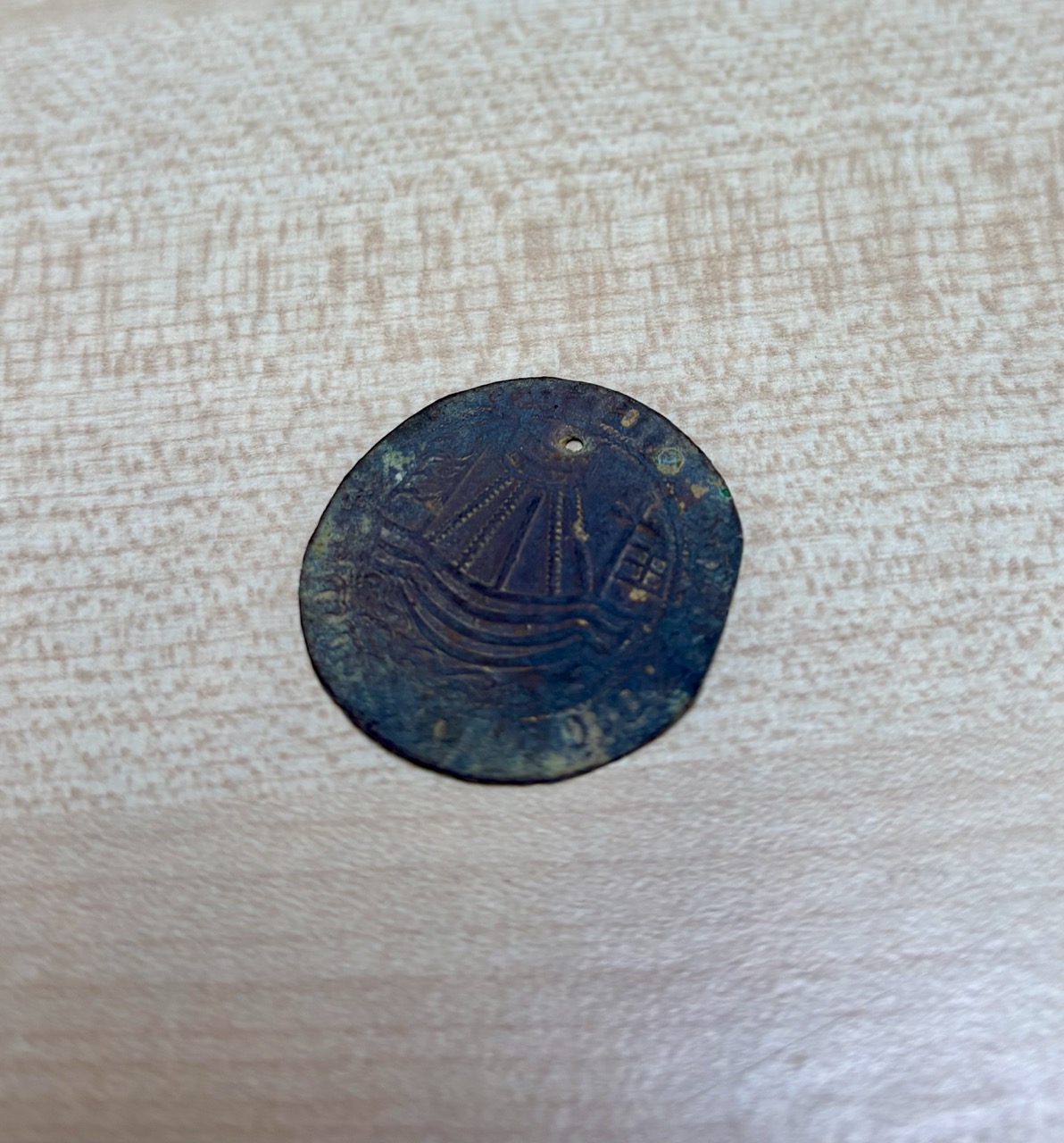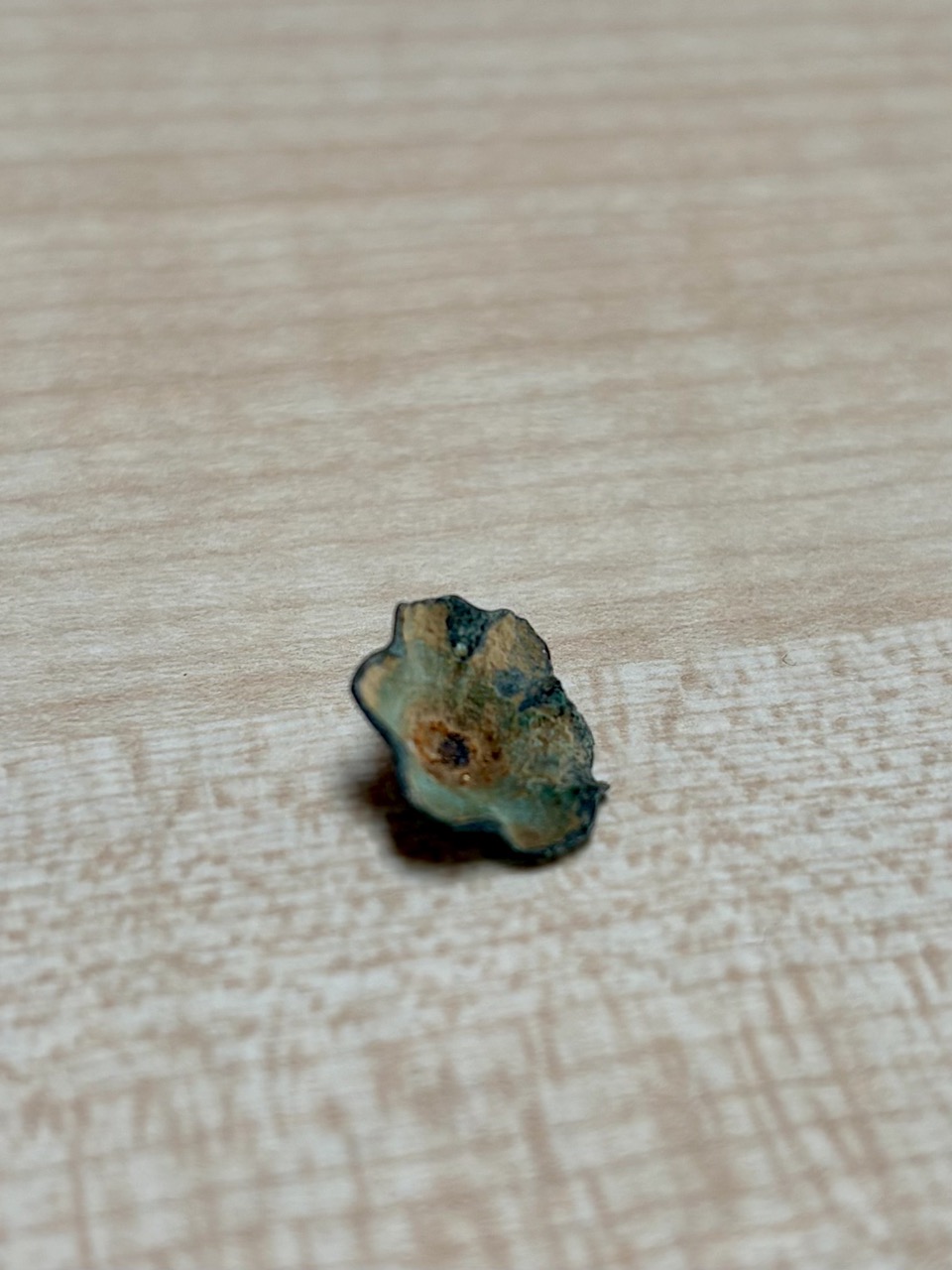Found in the fields!
Aug 08, 2025

We can hardly be further from the sea, but someone a while back lost this “ship penny” in one of the top fields.

Ed Caswell, the county Finds Liaison Officer, was excited about being able to record this artefact under the Portable Antiquities Scheme since nothing of this exact design is represented in the "Bible" of jettons, by Michael Mitchener, which covers hundreds of different types.
Ed is confident it was made in the period 1490-1550, and the prominent four-fold fleur de lys on the reverse indicates a French origin. The ship portrayed on the face is clearly medieval, with central mast, rigging and flag.
But, despite its popular name, this is not in fact a penny (though it is about the size of the pre-decimalisation coin). Nor is it any kind of money. What we have is a “jetton”, a token designed for a chequer board to help keep accounts, and perhaps later used in games. That this example has a hole punched through suggests it was also at one time hung on a chain, presumably as jewellery.

On a much smaller scale, the fields have yielded two six-petalled (sexfoil) floral studs from a leather strap or belt worn sometime between 1350 and 1450. That such delicate pieces of work – no larger than a pixie’s hat – have survived in the soil (despite ploughing) for six centuries is remarkable.
So far this year, Rob Stepney, our metal detectorist, also unearthed two Roman copper alloy coins. Both are in very poor condition, with little discernible. But Ed’s expert eye can see enough to date them. One is from AD 318-24 and shows a rectangular altar with globe on top, probably suggesting peace: the type of coin is known as BEATA TRANQUILLITAS.
The other is likely a few years older. The very worn bust with a spiked or “radiate” crown may be that of Allectus (AD 293-6), a usurper emperor who held power briefly in Britain and northern Gaul before being killed at Silchester, near modern Reading.
And -- from the most ancient historical artefact to the most recent -- there was also a metal clasp of “fishtail” design (with a motif of rings and a dot) once used to hold shut a book that someone liked to read in the fields. This style of fastener was used over a long period between around 1500 and 1700.
Recent news items




